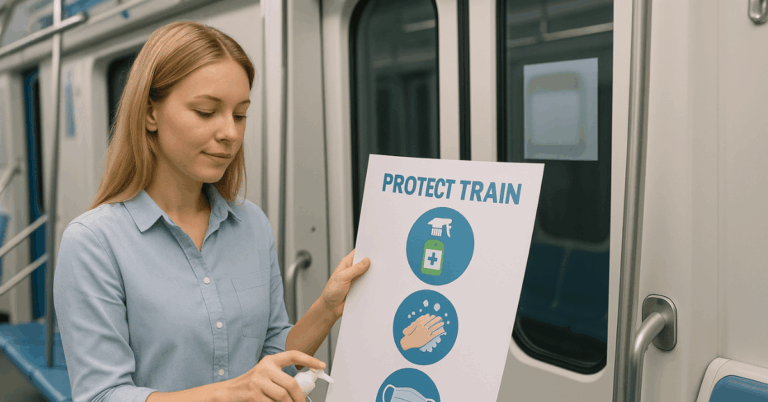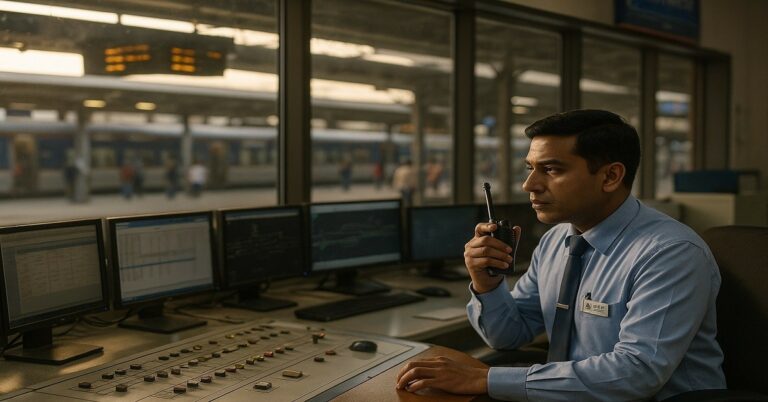The major bridge maintenance scheduled for winter aims to ensure safety and long-term durability for public infrastructure. It prepares bridges to resist freezing, snow, and corrosion.
The article explains the project’s purpose, key repairs, and its impact on commuters. This maintenance strengthens transportation reliability during the cold season.
The Importance of Winter Bridge Maintenance
Cold weather can severely affect bridges, making preventive work essential for public safety.
Understanding why these structures need maintenance helps you see the value behind each project phase.
Why Bridges Need Special Attention in Winter?
When temperatures drop, materials like steel and concrete expand and contract repeatedly.
This freeze-thaw cycle can cause cracks, surface spalling, and joint damage. De-icing chemicals, while necessary for safety, accelerate corrosion in steel reinforcements and bearings.
Snow and ice also add extra weight, which strains bridge decks and joints, leading to premature wear. Addressing these risks ensures bridges remain safe throughout the winter season.
Preventive Measures Before Winter Arrives
Before winter sets in, inspection teams focus on strengthening weak points. Drainage systems are cleaned to prevent water and ice buildup that can crack pavements.
Workers apply protective sealants to stop moisture from seeping into expansion joints.
Exposed steel parts receive anti-corrosion coatings to reduce rust formation. Preventive maintenance saves money and time by avoiding large-scale repairs later.
Scope of the Upcoming Maintenance Work
The maintenance plan covers several vital components to ensure the structure’s reliability. Engineers have outlined multiple stages of repair, testing, and reinforcement.
Key Repair Activities
The process begins with deck resurfacing to fix potholes and cracks caused by previous winters.
Damaged expansion joints and bearings will be replaced to maintain flexibility during temperature shifts.
Concrete reinforcement is scheduled where structural weaknesses have been identified through recent inspections.
Inspection and Structural Testing
Modern technology assists in identifying hidden damage efficiently. Drones and thermal imaging cameras capture detailed views of hard-to-reach areas.
Load tests will measure the bridge’s ability to handle heavy traffic under stress. Engineers document every finding to prioritize urgent repairs.
These evaluations help determine the most effective maintenance timeline and cost distribution.
Impact on Traffic and Commuters
Maintenance projects can cause temporary disruptions, but they are carefully planned to reduce inconvenience.
Traffic management and communication play a major role in minimizing the effect on daily commutes.
Expected Lane Closures and Detours
Bridge maintenance often involves partial lane closures during off-peak hours. Authorities create alternate routes and coordinate with navigation apps to guide motorists efficiently.
Detour signs and road markers are placed in advance to maintain smooth traffic flow.
Coordination between regional offices ensures that public safety and mobility remain priorities.
Public Advisory and Communication Plans
Effective communication helps commuters plan their routes better. Public advisories are announced through local radio, social media, and transportation websites.
Real-time updates keep drivers informed of lane closures and alternate routes. Local NGOs offer help to passengers, particularly those needing temporary assistance or information during long detours.
Transparency ensures cooperation and public understanding throughout the project.
Weather Challenges During Maintenance
Winter conditions make construction work more complex and demanding. Maintenance crews must follow strict safety protocols and use specialized materials suited for cold weather.
Safety Procedures for Workers
Crews are trained to handle equipment in freezing conditions while wearing insulated protective gear. Warm-up shelters are set up on-site to prevent cold-related injuries.
Machinery checks are conducted regularly to avoid malfunctions caused by ice buildup.
Emergency teams remain on standby to respond quickly to accidents or sudden weather changes.
Materials Used for Cold Weather Repairs
Certain materials perform better at low temperatures. Cold-mix asphalt allows patching without heating, making it ideal for quick fixes.
Special concrete with anti-freeze additives ensures faster curing and longer durability.
Weather-resistant paints and coatings protect exposed metal from corrosion. These innovations make it possible to complete critical work even in harsh conditions.
Coordination Between Agencies
Proper coordination is key to completing large-scale maintenance efficiently. Several agencies collaborate to ensure quality and safety compliance.
Roles of Key Agencies and Teams
Each unit’s role ensures a seamless operation from preparation to completion.
- Department of Transportation (DOT): Supervises the maintenance plan, budget, and overall safety compliance.
- Local Public Works Offices: Conduct site inspections and handle on-ground coordination.
- Private Contractors: Execute the actual construction, using approved materials and methods.
- Emergency Response Units: Remain ready for quick deployment during storms or accidents.
Budget and Funding Allocation
Infrastructure maintenance requires substantial funding and accountability. Public trust grows when resources are used transparently and efficiently.
Sources of Funding
Funding comes from national infrastructure programs and local government budgets.
In some regions, emergency maintenance funds are allocated for immediate repairs.
Public–private partnerships may also provide support through collaboration. These combined sources ensure the timely execution of the maintenance plan.
Estimated Costs and Timeline
Cost estimates vary depending on bridge size and condition. Typically, projects like this may span several months, starting in early winter and ending before the spring thaw.
Weather unpredictability can cause minor delays, but contingency plans are set in place. Regular progress reports keep citizens informed of every milestone.
Environmental and Structural Considerations
Bridge maintenance must protect both the infrastructure and the surrounding environment.
Engineers adopt eco-conscious practices to minimize impact while improving durability.
Eco-Friendly Maintenance Methods
Recycled asphalt and concrete reduce waste and lower costs. Dust control systems are implemented to protect nearby communities.
Drainage improvements help prevent chemical runoff into nearby rivers. Noise barriers are used to reduce disturbance for residents and wildlife in the area.
Structural Reinforcement Efforts
Foundations are strengthened to resist soil erosion caused by melting snow and rain.
Improved drainage ensures that excess water flows away quickly, preventing ice formation.
Side barriers and pedestrian railings are upgraded for additional safety. These structural reinforcements prepare the bridge to withstand years of heavy use.
Technology and Innovation in Bridge Maintenance
Advancements in technology have transformed how maintenance teams detect, plan, and execute repairs.
Smart monitoring systems are increasingly integrated into major bridges nationwide.
Use of Smart Monitoring Systems
Sensors installed on bridges track vibration, movement, and temperature changes in real time.
This predictive maintenance approach allows engineers to detect weaknesses early.
Data gathered helps prioritize repairs and reduce future costs. The integration of smart technology improves both safety and efficiency.
Drone and Robotics Assistance
Drones perform visual inspections on high or hard-to-access sections without risking worker safety.
Robotics is now used for underwater welding and paint applications in extreme cold.
3D mapping tools create digital models for precise maintenance planning. These innovations represent the future of infrastructure management.
Community and Economic Impact
Bridge maintenance provides both short-term and long-term benefits. While road closures may be inconvenient, the outcome ensures safer and more efficient travel.
Short-Term Disruptions vs. Long-Term Gains
Temporary lane closures might slow traffic, but they prevent future accidents and costly reconstruction.
Once completed, the project will enhance transportation reliability for commuters and freight carriers.
Improved bridge conditions also attract business investments and tourism. In the long term, well-maintained infrastructure boosts local economies and job creation.
Public Cooperation and Awareness
Authorities rely on community cooperation for smooth operations. Residents are urged to follow traffic advisories and obey temporary road signs.
Local businesses often assist workers with supplies and support. Public awareness campaigns educate citizens about the purpose and progress of the project.
Future Maintenance and Long-Term Planning
Bridge safety does not end after winter maintenance. Authorities have long-term strategies to maintain performance throughout the year.
Regular Inspection Schedules
Annual inspections ensure that cracks or corrosion are detected early. Engineers record data for comparison after every maintenance cycle.
This systematic evaluation prevents costly emergency interventions. Regular monitoring ensures the structure remains resilient for decades.
Adopting Modern Infrastructure Standards
Bridges are upgraded to comply with engineering standards and environmental regulations.
Smart sensors and monitoring software continue to guide maintenance planning.
Training programs for engineers and technicians ensure future readiness. Continuous improvement guarantees sustainability and reliability for all road users.
Conclusion – Strengthening Bridges for a Safer Winter
Bridge maintenance during winter is more than just routine work—it’s a long-term investment in safety and progress.
Every inspection, repair, and upgrade helps extend the life of vital transport links. With modern technology, efficient planning, and community cooperation, these efforts safeguard daily travel even under harsh weather.
Major bridge maintenance ensures the infrastructure remains strong and dependable for generations to come.













